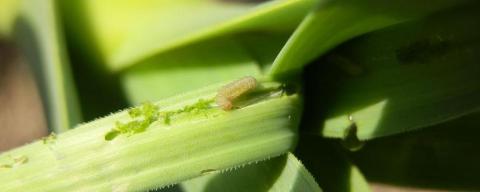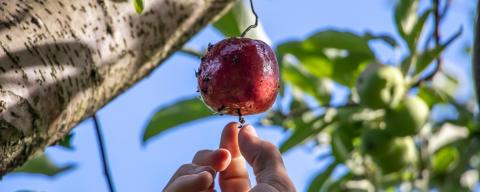Leek Moth in NH
Leek moth has been found at a farm in Merrimack County. Previously, this invasive insect had only been detected in Sullivan, Grafton and Coös Counties. Leek moth (Acrolepiopsis assectella) arrived in Vermont in 2012 and was first reported in New Hampshire in 2016. The caterpillar of this moth feeds on Alliums, including garlic, onions, and leeks. There are three generations of this pest, and it is active starting in very early spring (once the soil temperatures hit 50°F) in cycles through mid-late August. As you pull your garlic, pay attention for signs of damage. The damage can be confused with that caused by thrips, botrytis blight, and saltmarsh caterpillar – but there are ways to distinguish it, and the caterpillar is easy to identify. There are some excellent photos of the damage in these resources:
- Leek Moth Identification Center, University of Vermont Extension
- Leek Moth – A Pest of Onion Crops. Ontario Ministry of Agriculture, Food & Rural Affairs
- Leek Moth, Massachusetts Introduced Pests Outreach Project
These publications also detail management tactics. In addition to chemical approaches, topping, row covers, and other methods of exclusion can be effective.
Extension Services & Tools That Help NH Farmers Grow
Newsletters: Choose from our many newsletters for production agriculture
Receive Pest Text Alerts - Text UNHIPM to (866) 645-7010



